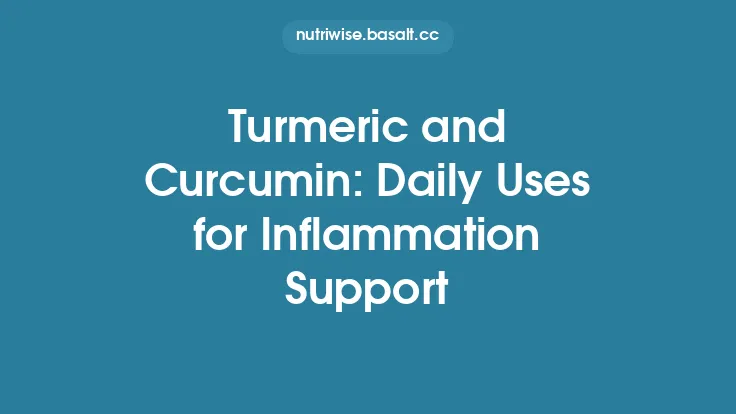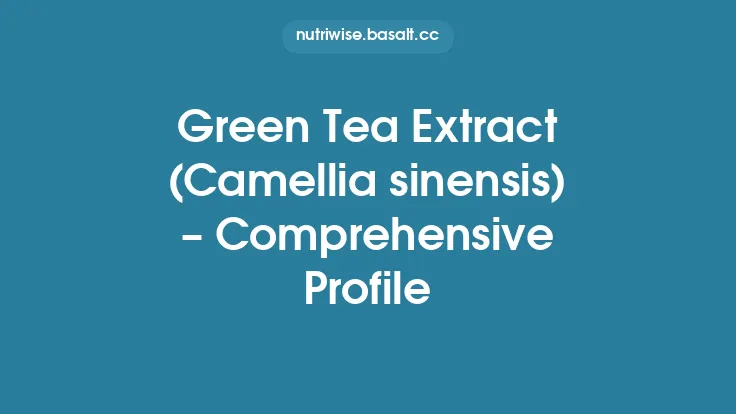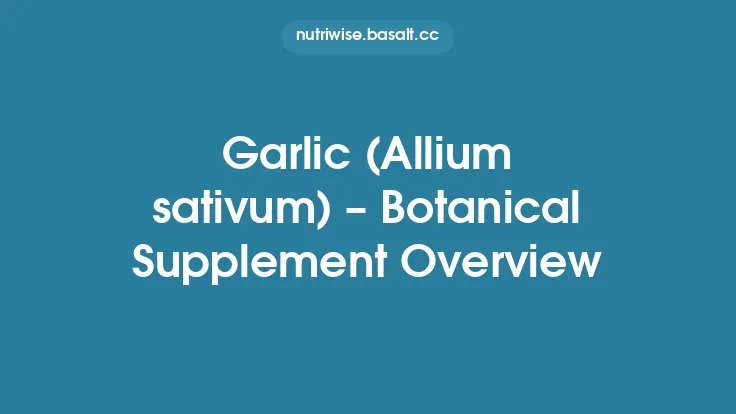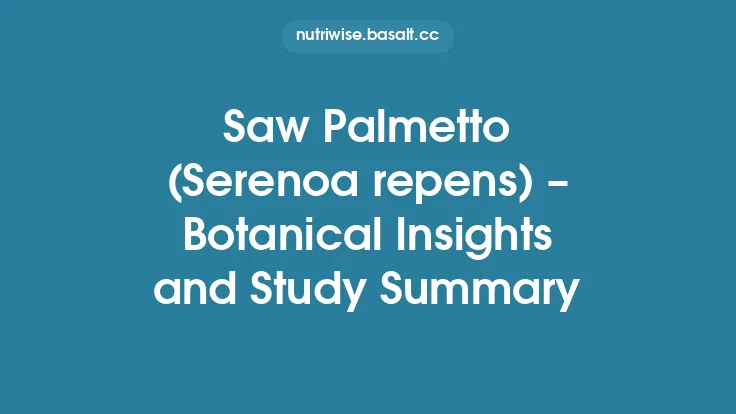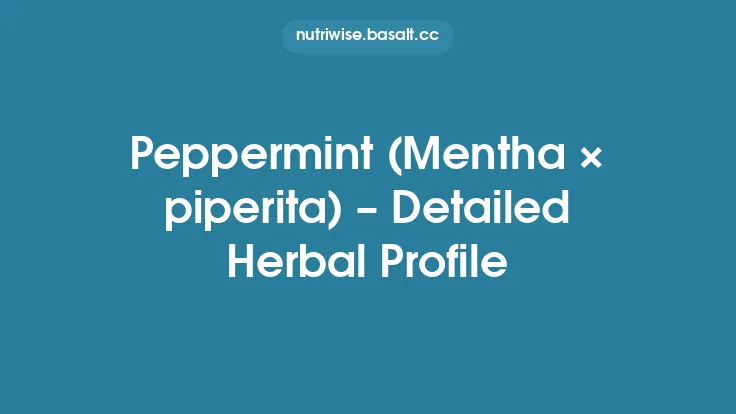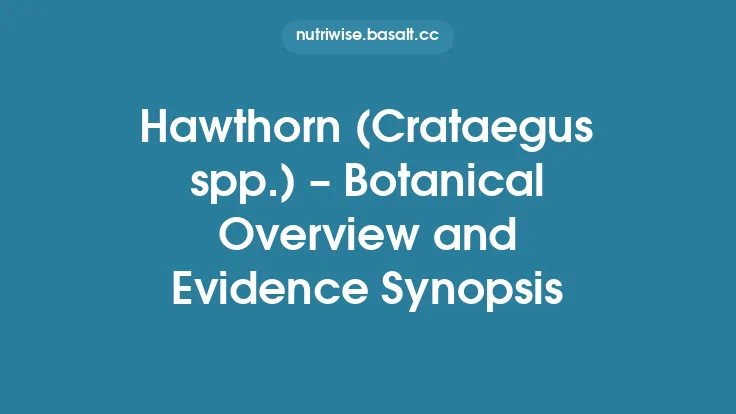Turmeric (Curcuma longa) is a rhizomatous perennial belonging to the Zingiberaceae family, celebrated for its vibrant orange‑yellow pigment and a long history of culinary, medicinal, and cultural use across South and Southeast Asia. The plant thrives in warm, humid climates and is cultivated primarily for its rhizomes, which are harvested, dried, and processed into a fine powder, essential oil, or standardized extracts. Modern interest in turmeric has surged due to the bioactive compound curcumin, a polyphenol with notable antioxidant and anti‑inflammatory properties. This profile consolidates current botanical knowledge, phytochemical composition, cultivation practices, and evidence‑based considerations relevant to supplement formulation and consumer use.
Taxonomy and Nomenclature
- Kingdom: Plantae
- Clade: Angiosperms → Monocots → Commelinids
- Order: Zingiberales
- Family: Zingiberaceae
- Genus: *Curcuma*
- Species: *C. longa* L.
- Synonyms: *Curcuma domestica (L.) Vahl, Curcuma aromatica* (L.) Benth. ex Hook.f.
The species epithet “longa” refers to the elongated shape of the rhizome. Common vernacular names include “turmeric,” “haldi” (Hindi), “kencur” (Indonesian), and “kumarika” (Sanskrit).
Botanical Description
- Growth habit: Herbaceous perennial reaching 0.5–1.0 m in height.
- Leaves: Large, lanceolate, sheathing leaves with a glossy, dark green surface; petioles are robust, supporting the leaf blade.
- Inflorescence: Terminal, spike-like racemes emerging from the leaf sheath; each flower is subtended by a bract and displays a pale yellow to orange hue.
- Rhizomes: Thick, fleshy, and segmented; the outer skin is brownish, while the interior tissue is bright orange due to curcuminoids.
- Root system: Primarily rhizomatous; adventitious roots develop from the rhizome nodes, anchoring the plant in loose, well‑drained soils.
Geographic Distribution and Habitat
Native to the Indian subcontinent, *C. longa* has been naturalized throughout tropical and subtropical regions, including:
- South Asia (India, Bangladesh, Sri Lanka, Nepal)
- Southeast Asia (Indonesia, Thailand, Malaysia, Philippines)
- East Africa (Kenya, Tanzania)
- Caribbean islands (Jamaica, Trinidad)
Optimal growth occurs in altitudes up to 1,500 m, with annual rainfall of 1,200–2,500 mm, temperatures ranging from 20–35 °C, and soils that are loamy, well‑drained, and slightly acidic (pH 5.5–6.5).
Cultivation Practices
- Propagation: Primarily vegetative via rhizome cuttings; each cutting should contain at least one viable bud.
- Planting density: 30–45 cm between plants and 45–60 cm between rows to allow adequate rhizome expansion.
- Soil preparation: Incorporate organic matter (compost or well‑rotted manure) to improve structure and nutrient availability.
- Irrigation: Consistent moisture is critical during the vegetative phase; however, waterlogging must be avoided to prevent rhizome rot.
- Fertilization: Balanced NPK (e.g., 20‑10‑20) applied at planting and mid‑season, supplemented with micronutrients (Zn, Mn, B) as needed.
- Weed management: Mulching and manual removal are preferred to minimize herbicide residues in the rhizome.
- Harvest: Rhizomes are typically harvested 7–10 months after planting, when the foliage begins to yellow and die back. Post‑harvest handling includes washing, sun‑drying (or low‑temperature oven drying), and milling.
Phytochemistry
Turmeric’s pharmacological interest centers on its secondary metabolites, particularly the curcuminoids and essential oil constituents.
| Class | Major Compounds | Approximate Content (dry weight) |
|---|---|---|
| Curcuminoids | Curcumin, Demethoxycurcumin, Bisdemethoxycurcumin | 2–6 % |
| Essential oils | Turmerone, Ataraxone, α‑Turmerone, β‑Turmerone, β‑Caryophyllene | 0.5–2 % |
| Diarylheptanoids | Curcumin analogues (e.g., diacetylcurcumin) | trace |
| Phenolic acids | Ferulic acid, p‑Coumaric acid | trace |
| Polysaccharides | Starch, non‑starch polysaccharides (β‑glucans) | 20–30 % |
| Vitamins & minerals | Vitamin C, Vitamin E, K, iron, manganese | variable |
Curcumin (1,7‑bis(4‑hydroxy‑3‑methoxyphenyl)‑1,6‑heptadiene‑3,5‑dione) is a diarylheptanoid with a conjugated diketone system, conferring its characteristic yellow color and redox activity. The curcuminoid mixture exhibits synergistic antioxidant capacity, while the essential oil fraction contributes antimicrobial and anti‑inflammatory actions.
Traditional and Ethnobotanical Uses
- Ayurveda: Employed as a “rasayana” (rejuvenative) for balancing the “pitta” dosha, supporting digestion, and promoting skin health.
- Traditional Chinese Medicine (TCM): Utilized to move “qi,” alleviate stagnation, and treat menstrual irregularities.
- Southeast Asian folk medicine: Applied topically for wound healing, as a poultice for bruises, and orally for gastrointestinal discomfort.
- Culinary: Integral spice in curries, sauces, and beverages; also used as a natural food coloring.
Modern Scientific Evidence (Evergreen Overview)
Research over the past two decades has elucidated several mechanisms of action for turmeric constituents:
- Antioxidant activity: Curcumin scavenges reactive oxygen species (ROS) and up‑regulates endogenous antioxidant enzymes (e.g., superoxide dismutase, catalase) via the Nrf2‑ARE pathway.
- Anti‑inflammatory effects: Inhibition of cyclooxygenase‑2 (COX‑2), lipoxygenase, and nuclear factor‑κB (NF‑κB) signaling reduces prostaglandin and cytokine production.
- Modulation of cell signaling: Curcumin interacts with multiple kinases (e.g., MAPK, PI3K/Akt) and transcription factors, influencing apoptosis, autophagy, and cellular proliferation.
- Metabolic support: Evidence suggests improvements in insulin sensitivity and lipid profiles, potentially mediated by AMPK activation.
- Neuroprotective potential: Preclinical models indicate attenuation of amyloid‑β aggregation and mitigation of neuroinflammation, supporting exploratory use in cognitive health.
While many studies are preclinical or involve small human cohorts, the cumulative data underscore a broad pharmacological spectrum that justifies continued investigation.
Safety, Tolerability, and Contraindications
- General safety: Turmeric powder used as a culinary spice is recognized as safe (GRAS). Standardized extracts (typically 95 % curcuminoids) are well‑tolerated at doses up to 2 g/day in most adults.
- Adverse effects: High doses may cause gastrointestinal upset (e.g., nausea, diarrhea) or, rarely, gallbladder contraction.
- Drug interactions: Curcumin can inhibit CYP3A4, CYP2C9, and P‑glycoprotein, potentially affecting the metabolism of anticoagulants (warfarin), antiplatelet agents, and certain chemotherapeutics.
- Pregnancy & lactation: While culinary use is considered safe, supplemental doses >500 mg/day are not recommended due to limited safety data.
- Allergies: Individuals with known sensitivity to ginger family members should exercise caution.
Dosage Forms and Standardization
| Form | Typical Standardization | Common Dosage Range |
|---|---|---|
| Powder (whole rhizome) | Not standardized (color intensity as proxy) | 1–3 g/day (culinary) |
| Standardized extract | 95 % curcuminoids (often with 5 % essential oil) | 500–1,000 mg/day |
| Curcumin‑phospholipid complex (e.g., Meriva) | 20 % curcuminoids, 10 % phosphatidylcholine | 250–500 mg/day |
| Curcumin‑nanoparticle or micelle formulations | 10–20 % curcuminoids, enhanced bioavailability | 100–300 mg/day |
| Essential oil capsules | 5–10 % turmerone content | 100–200 mg/day |
| Topical preparations | 1–3 % curcumin in creams/ointments | Applied 1–3 times daily |
Bioavailability remains a central challenge; co‑administration with piperine (black‑pepper alkaloid) or formulation in lipid‑based carriers can increase systemic exposure by 2–20‑fold.
Quality Control and Analytical Methods
- Identity verification: DNA barcoding (rbcL, matK) and macroscopic/microscopic examination of rhizome fragments.
- Purity assessment: High‑performance liquid chromatography (HPLC) with photodiode array detection for curcuminoid profiling; gas chromatography‑mass spectrometry (GC‑MS) for essential oil composition.
- Contaminant testing: Heavy metals (Pb, Cd, As, Hg) via inductively coupled plasma mass spectrometry (ICP‑MS); pesticide residues using LC‑MS/MS; microbial limits per USP <61>/<62>.
- Stability: Accelerated stability studies (40 °C/75 % RH) to monitor curcumin degradation (formation of vanillin, ferulic acid) and ensure label claim retention.
Regulatory Status (Global Overview)
- United States: Turmeric and its extracts are marketed as dietary supplements under the Dietary Supplement Health and Education Act (DSHEA). Health claims are limited to structure‑function statements (e.g., “supports joint health”).
- European Union: Classified as a novel food ingredient when used in concentrations exceeding traditional dietary levels; requires EFSA safety assessment.
- India: Recognized under the Ayurvedic Pharmacopoeia of India; standardized extracts are listed in the Indian Pharmacopoeia (IP).
- Canada: Natural health product (NHP) category; requires a product license with evidence of safety and efficacy for claimed uses.
- Australia: Listed under the Therapeutic Goods Administration (TGA) as a complementary medicine; must meet GMP and labeling standards.
Sustainable Production and Future Directions
Increasing global demand has prompted attention to sustainable agronomic practices:
- Crop rotation with legumes to maintain soil nitrogen.
- Integrated pest management (IPM) to reduce pesticide reliance.
- Organic certification pathways that emphasize soil health and biodiversity.
Research frontiers include:
- Nanotechnology‑based delivery systems to overcome curcumin’s low oral bioavailability.
- Synergistic formulations combining turmeric with other botanicals (e.g., boswellia, ginger) for enhanced anti‑inflammatory outcomes.
- Genomic breeding to develop high‑curcumin cultivars with improved disease resistance.
Practical Recommendations for Supplement Formulators
- Source verification: Procure rhizomes from certified growers with traceable supply chains.
- Standardization strategy: Align curcuminoid content with target therapeutic indication; consider inclusion of turmerone‑rich essential oil for broader activity.
- Bioavailability enhancement: Incorporate piperine, phospholipid complexes, or lipid‑based carriers, and validate increased plasma levels in pilot pharmacokinetic studies.
- Stability safeguards: Use opaque, airtight packaging with desiccants; add antioxidants (e.g., tocopherols) to mitigate oxidative degradation.
- Label transparency: Clearly disclose curcuminoid percentage, presence of bioavailability enhancers, and any allergen warnings (e.g., ginger family).
By integrating rigorous botanical knowledge with modern analytical and formulation techniques, turmeric‑based supplements can deliver consistent, safe, and efficacious products that honor both traditional heritage and contemporary scientific standards.
